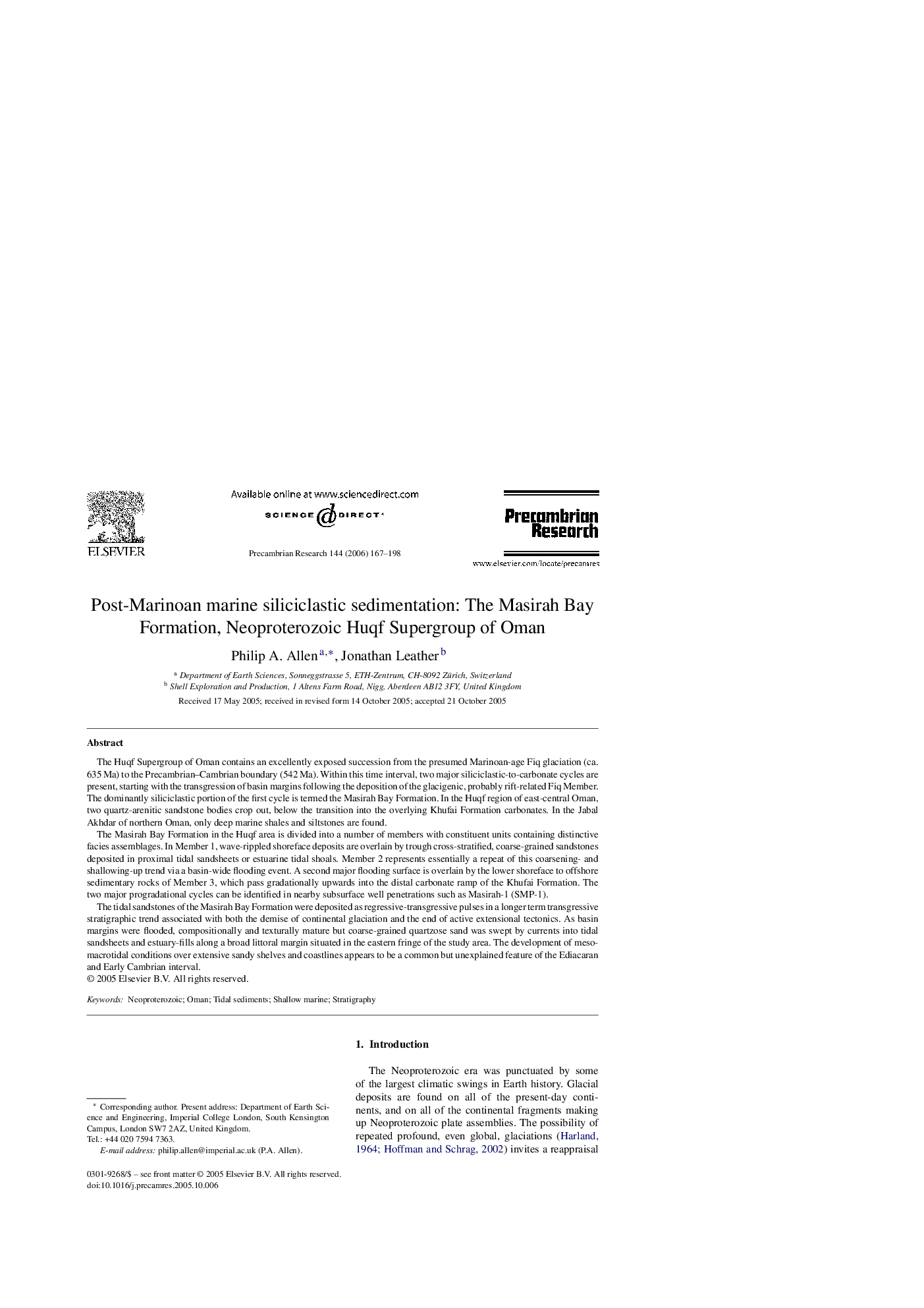| کد مقاله | کد نشریه | سال انتشار | مقاله انگلیسی | نسخه تمام متن |
|---|---|---|---|---|
| 4724616 | 1639740 | 2006 | 32 صفحه PDF | دانلود رایگان |

The Huqf Supergroup of Oman contains an excellently exposed succession from the presumed Marinoan-age Fiq glaciation (ca. 635 Ma) to the Precambrian–Cambrian boundary (542 Ma). Within this time interval, two major siliciclastic-to-carbonate cycles are present, starting with the transgression of basin margins following the deposition of the glacigenic, probably rift-related Fiq Member. The dominantly siliciclastic portion of the first cycle is termed the Masirah Bay Formation. In the Huqf region of east-central Oman, two quartz-arenitic sandstone bodies crop out, below the transition into the overlying Khufai Formation carbonates. In the Jabal Akhdar of northern Oman, only deep marine shales and siltstones are found.The Masirah Bay Formation in the Huqf area is divided into a number of members with constituent units containing distinctive facies assemblages. In Member 1, wave-rippled shoreface deposits are overlain by trough cross-stratified, coarse-grained sandstones deposited in proximal tidal sandsheets or estuarine tidal shoals. Member 2 represents essentially a repeat of this coarsening- and shallowing-up trend via a basin-wide flooding event. A second major flooding surface is overlain by the lower shoreface to offshore sedimentary rocks of Member 3, which pass gradationally upwards into the distal carbonate ramp of the Khufai Formation. The two major progradational cycles can be identified in nearby subsurface well penetrations such as Masirah-1 (SMP-1).The tidal sandstones of the Masirah Bay Formation were deposited as regressive-transgressive pulses in a longer term transgressive stratigraphic trend associated with both the demise of continental glaciation and the end of active extensional tectonics. As basin margins were flooded, compositionally and texturally mature but coarse-grained quartzose sand was swept by currents into tidal sandsheets and estuary-fills along a broad littoral margin situated in the eastern fringe of the study area. The development of meso-macrotidal conditions over extensive sandy shelves and coastlines appears to be a common but unexplained feature of the Ediacaran and Early Cambrian interval.
Journal: Precambrian Research - Volume 144, Issues 3–4, 10 February 2006, Pages 167–198